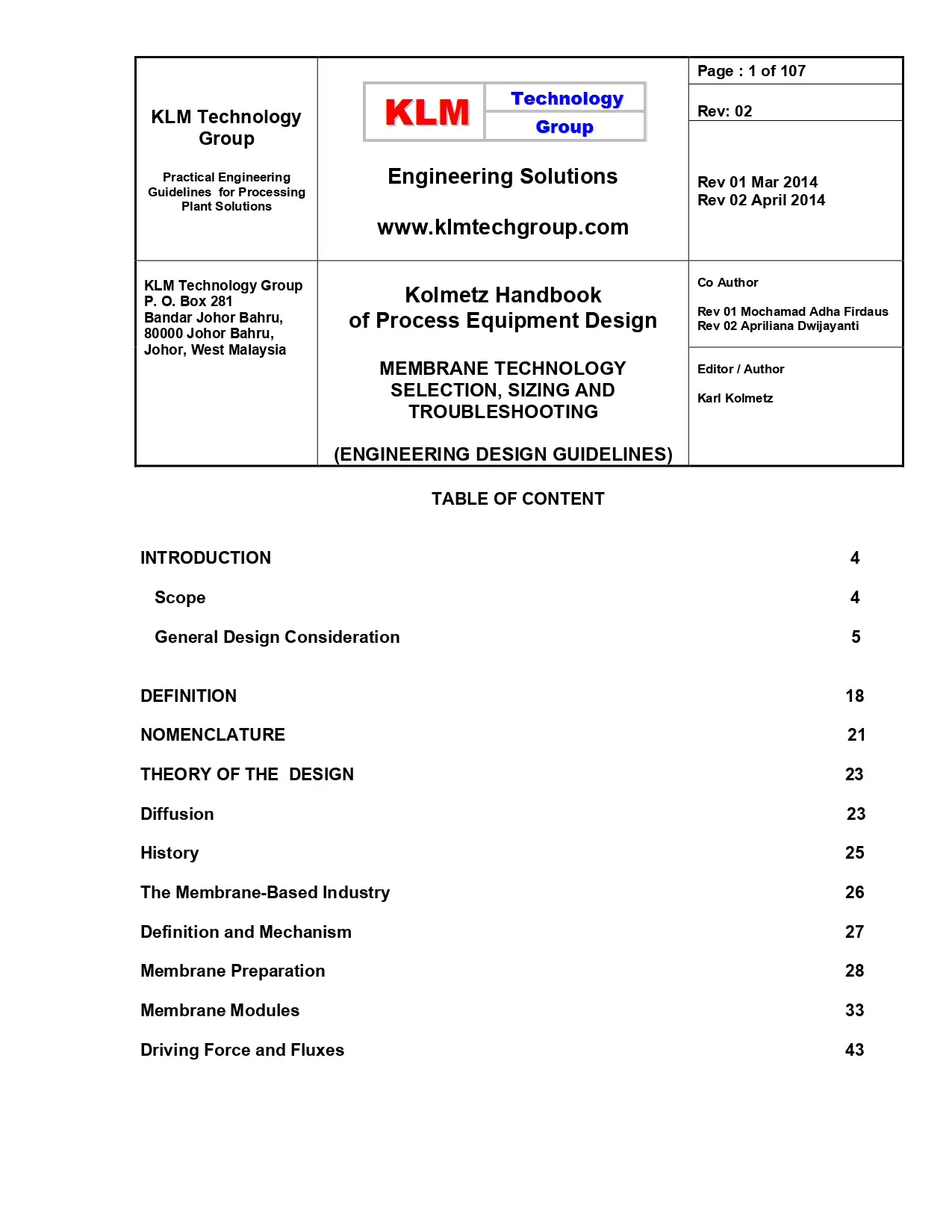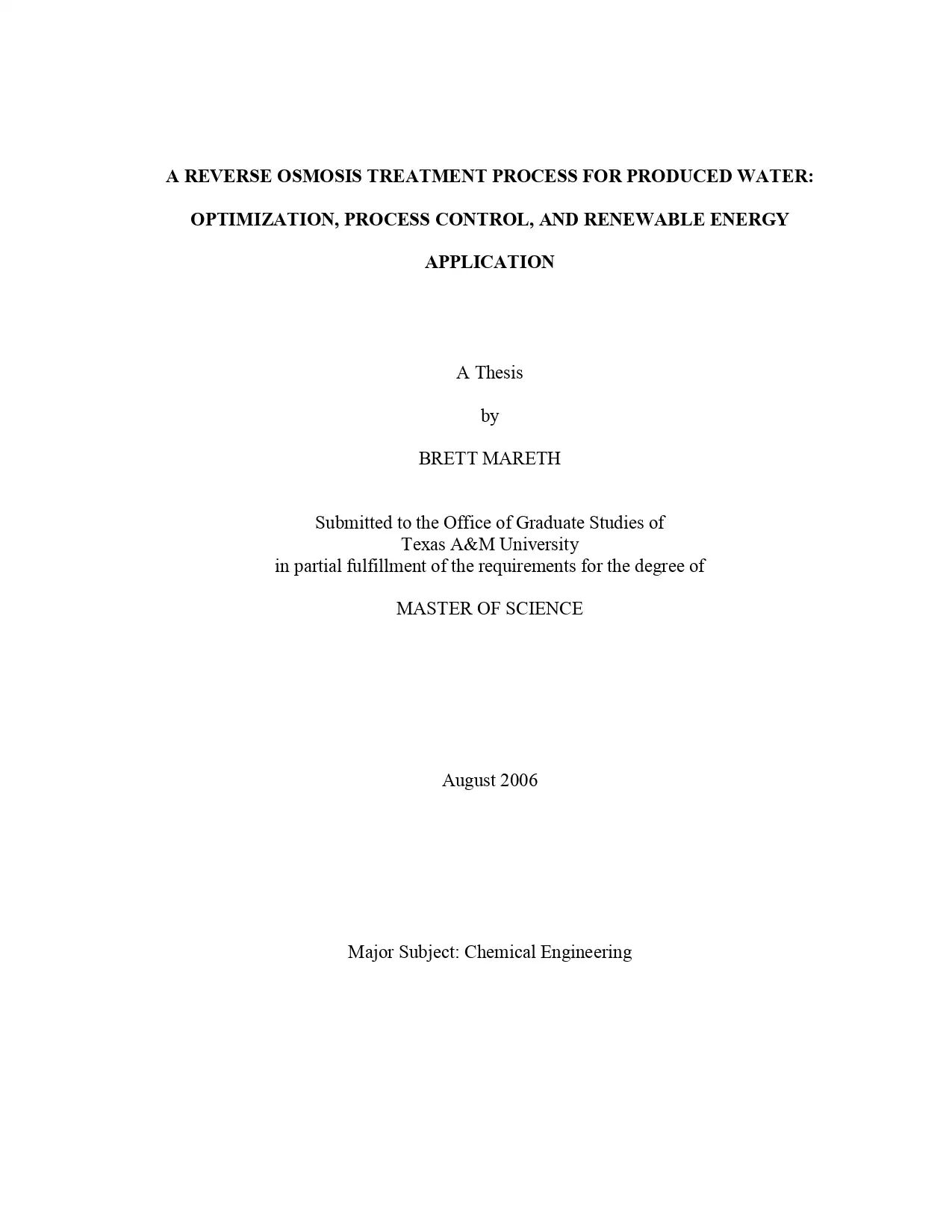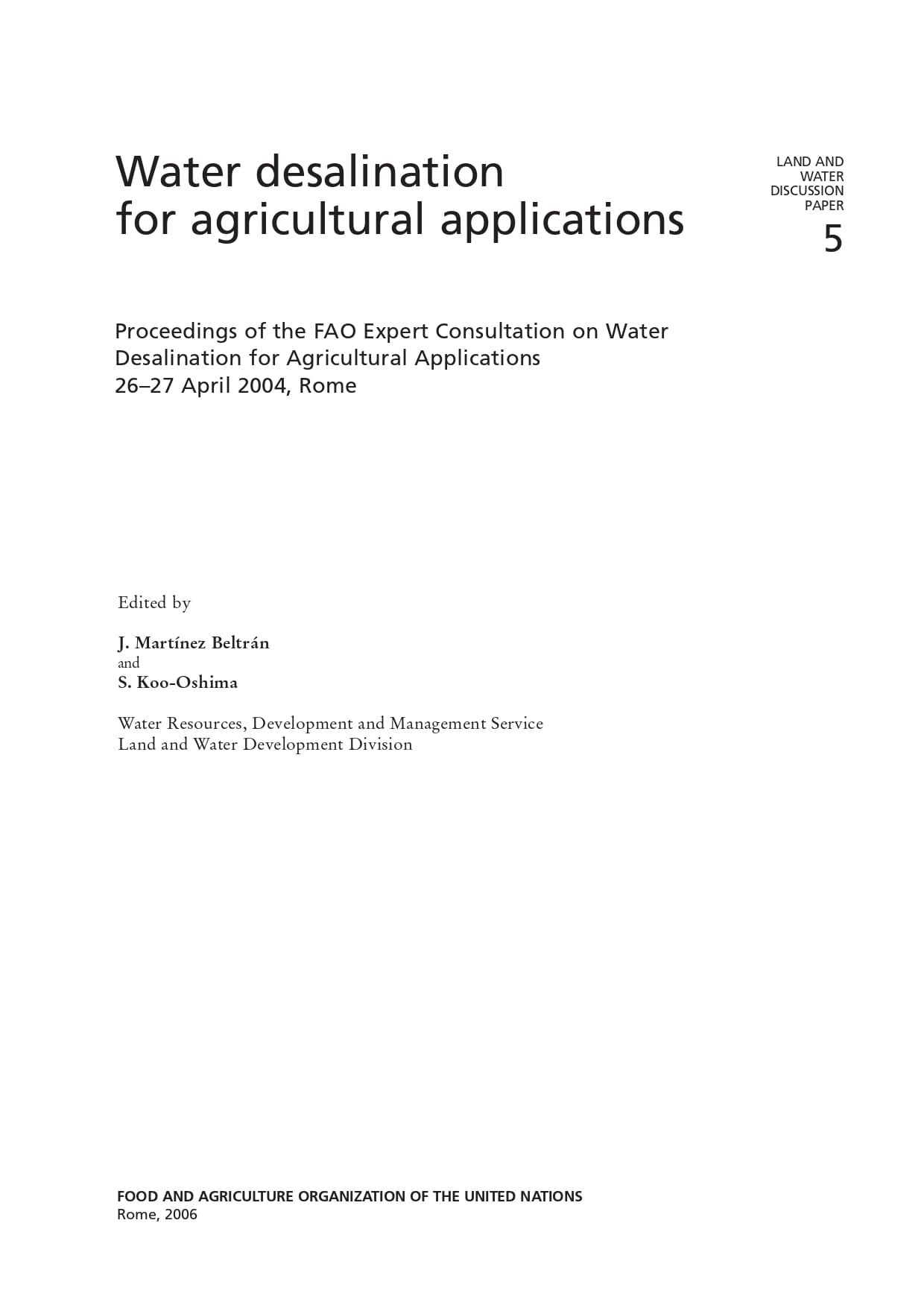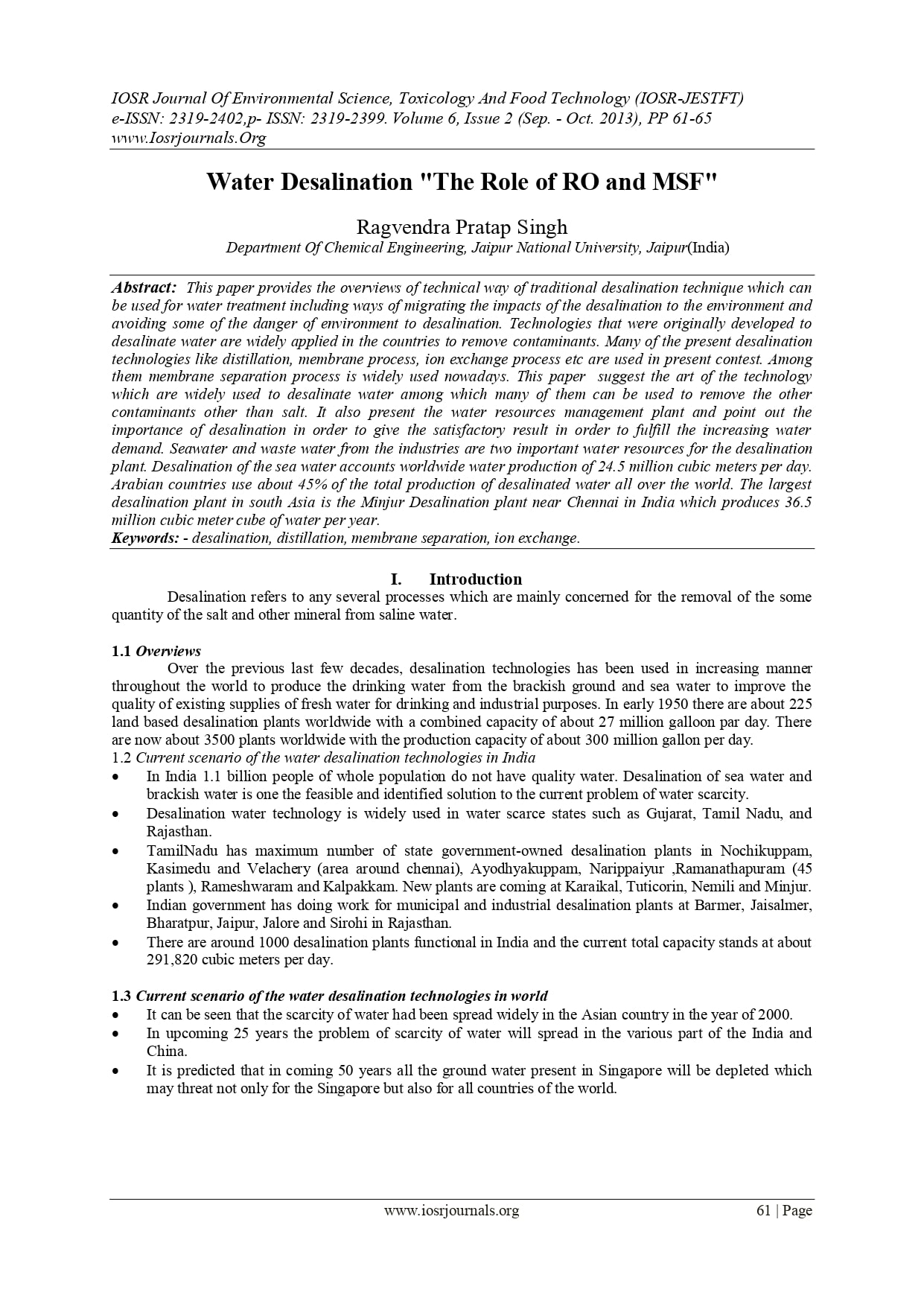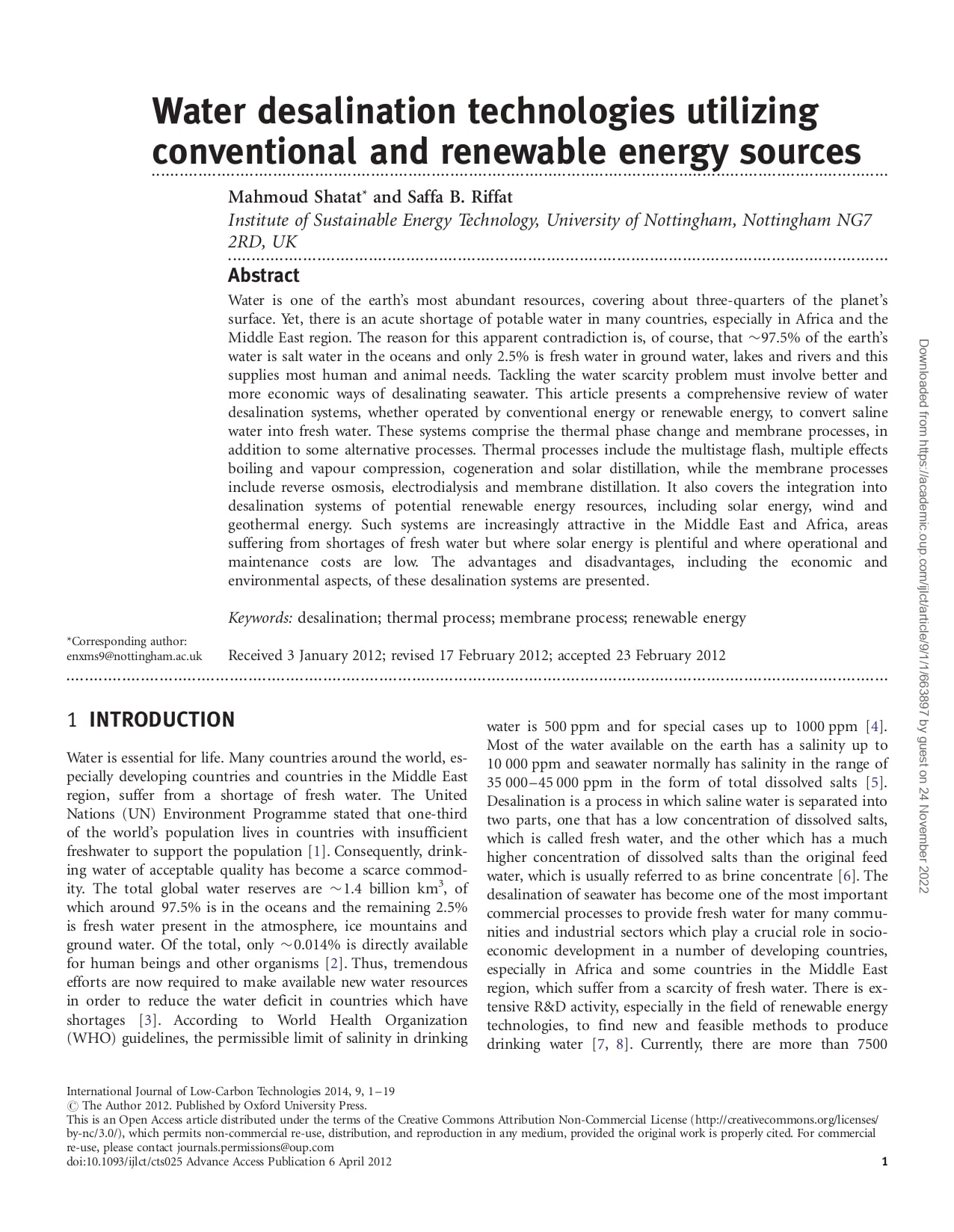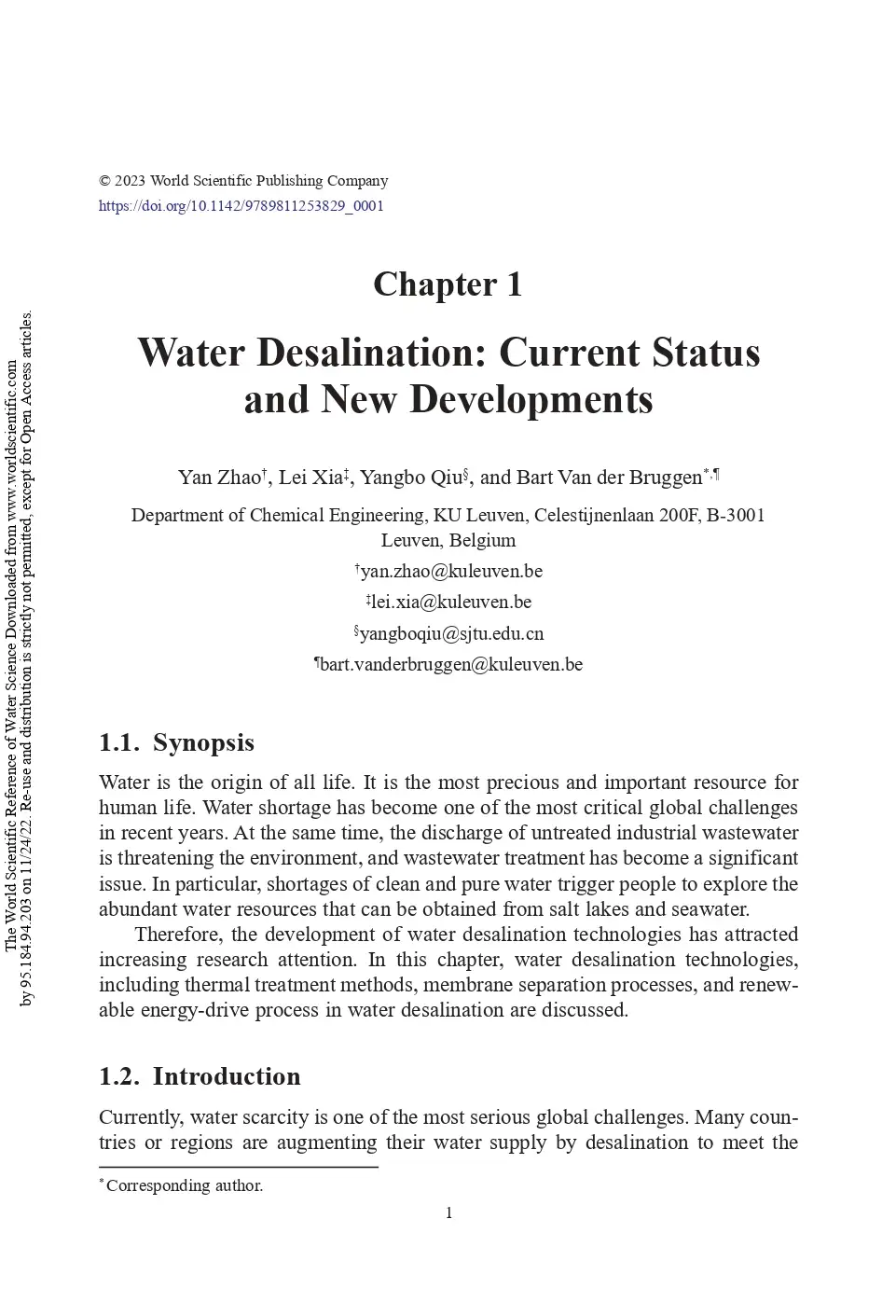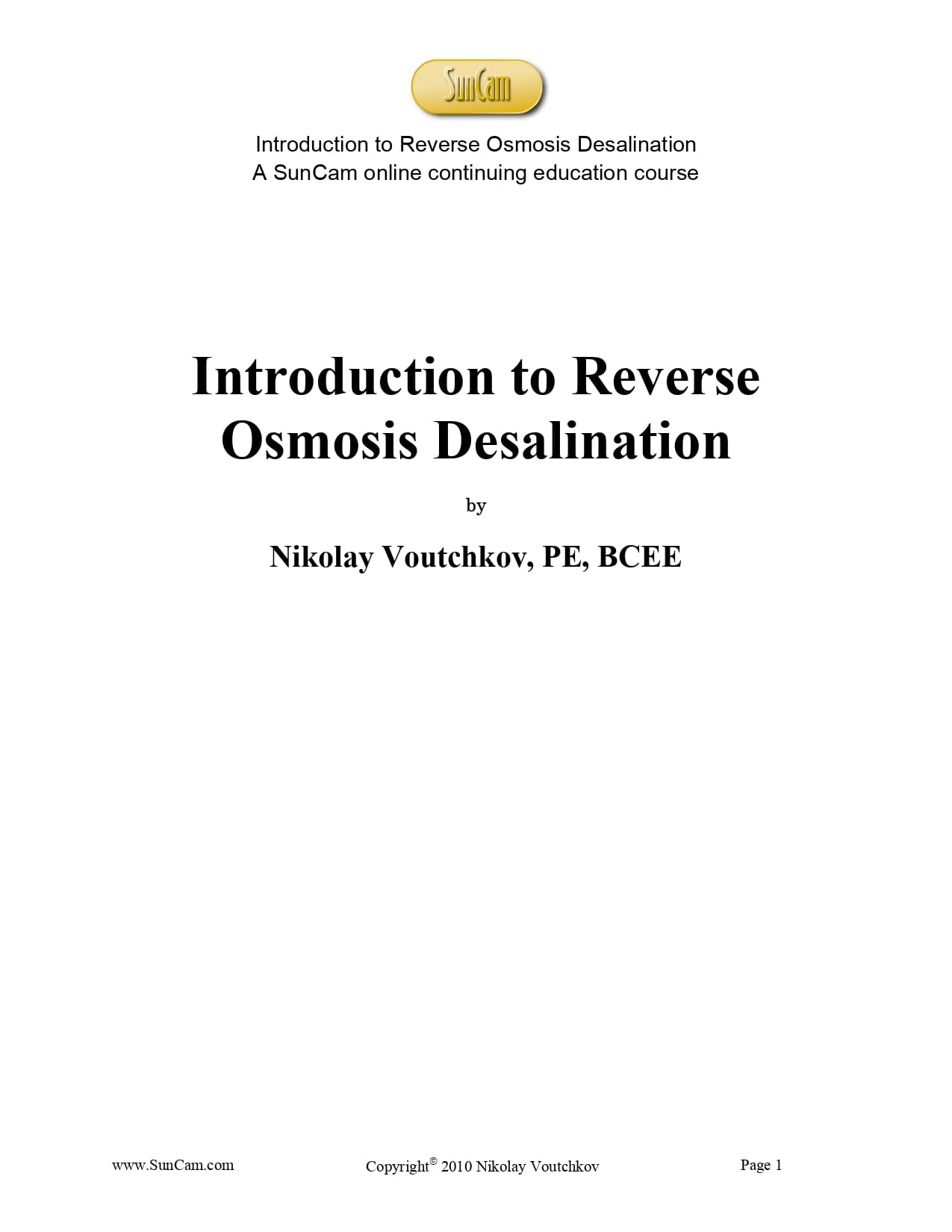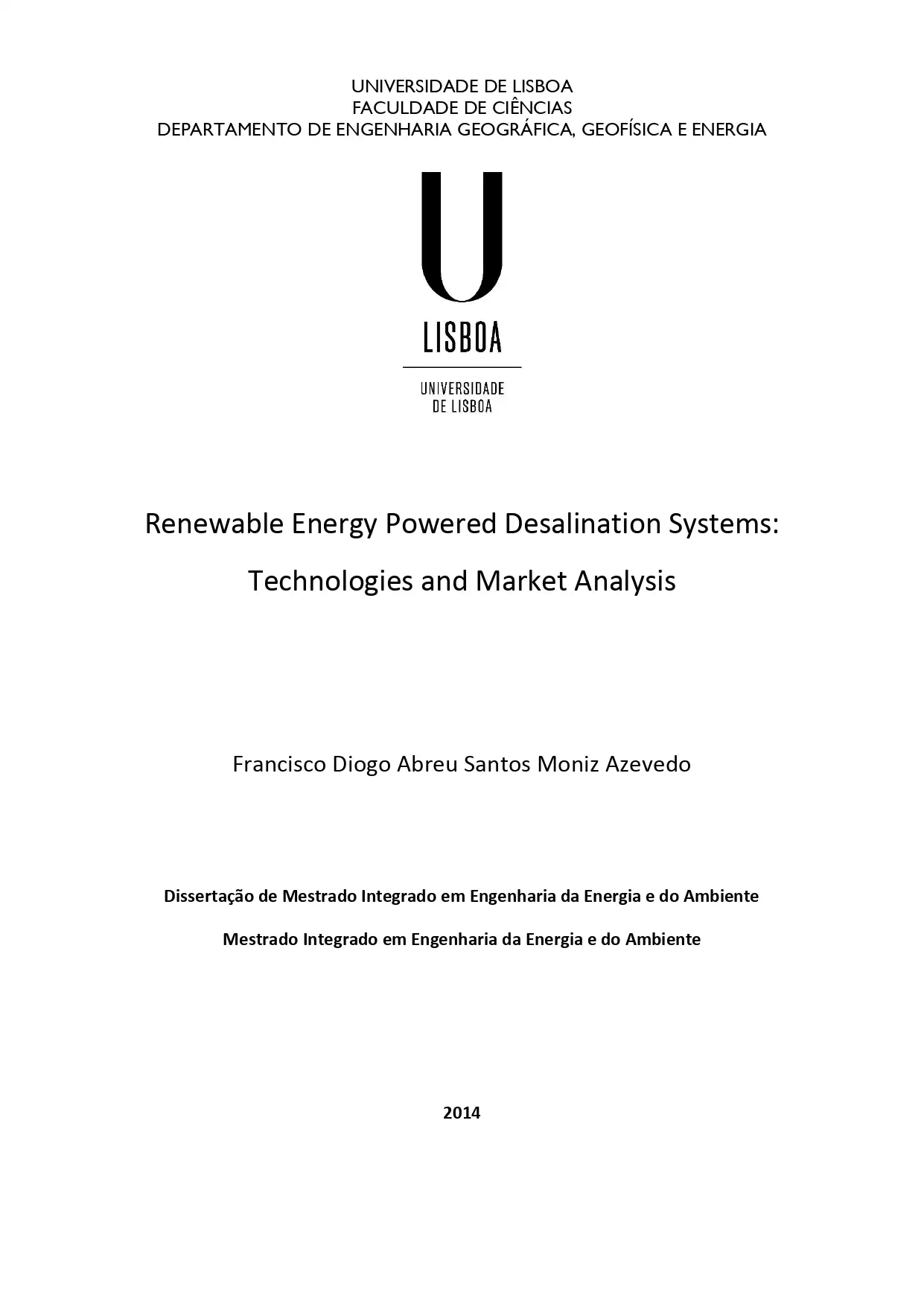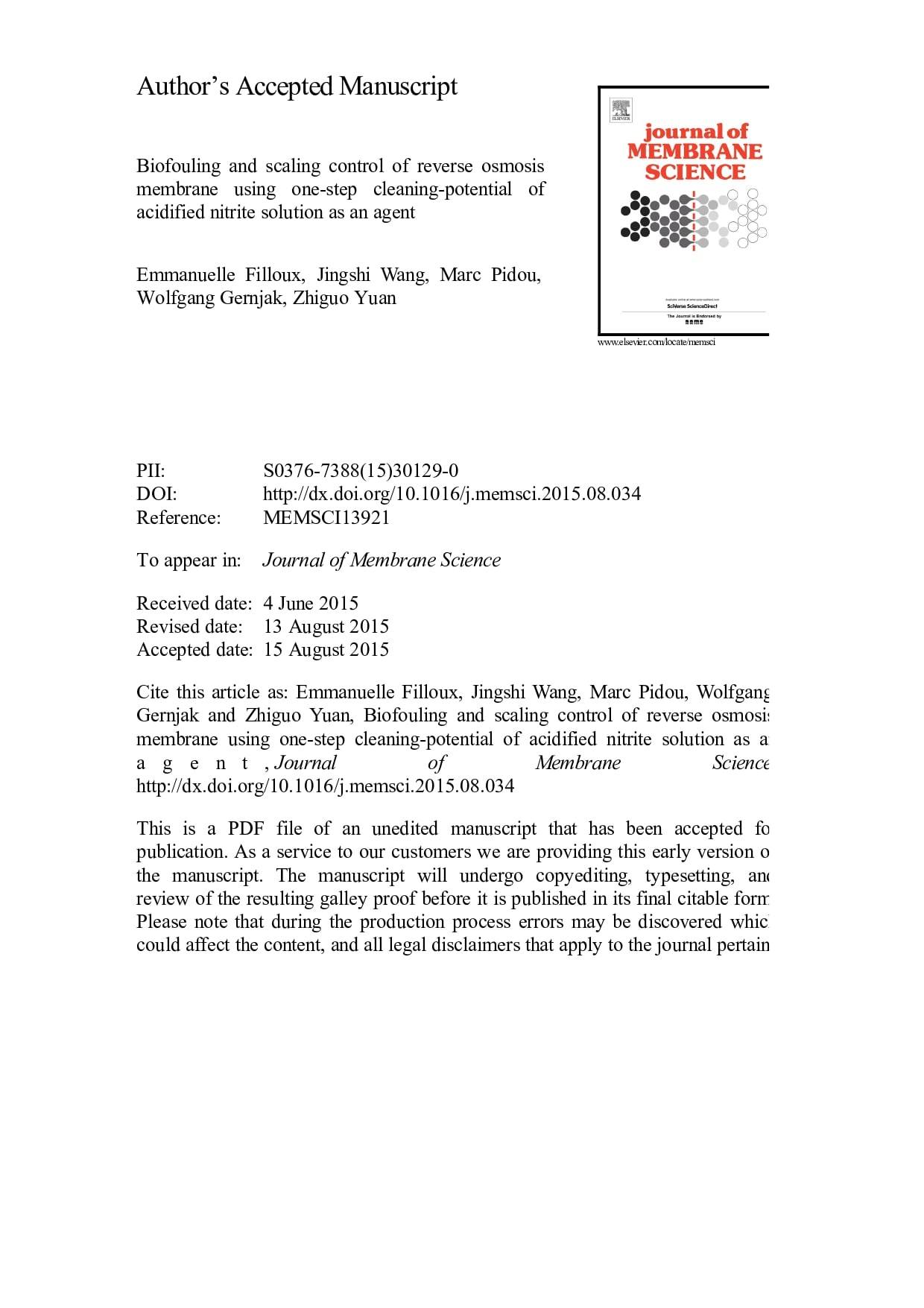Water Desalination Current Status and New Developments
Currently, water scarcity is one of the most serious global challenges. Many coun[1]tries or regions are augmenting their water supply by desalination to meet the *Corresponding author. The World Scientific Reference of Water Science Downloaded from www.worldscientific.com by 95.184.94.203 on 11/24/22. Re-use and distribution is strictly not permitted, except for Open Access articles. b4428-v3 World Scientific Reference of Water Science “9.61 x 6.69” 2 Y. Zhao et al. increased water requirements due to increased population, industrial expansion, tourism, and agriculture. Water desalination, which is considered as one of the main sources of producing clean water, refers to the process of removing salts and minerals from either seawater or brackish water to obtain pure water.1,2 Especially, some large-scale seawater desalination plants have been built in water-stressed countries to augment available water resources. Therefore, there are substantial research interests in finding effective technologies for pure water production. In recent years, desalination plants operate in more than 120 countries in the world. Figure 1.1 shows the global desalination capacities (m3/d) and the source water types.3
Water Desalination Current Status and New Developments
Currently, water scarcity is one of the most serious global challenges. Many coun[1]tries or regions are augmenting their water supply by desalination to meet the *Corresponding author. The World Scientific Reference of Water Science Downloaded from www.worldscientific.com by 95.184.94.203 on 11/24/22. Re-use and distribution is strictly not permitted, except for Open Access articles. b4428-v3 World Scientific Reference of Water Science “9.61 x 6.69” 2 Y. Zhao et al. increased water requirements due to increased population, industrial expansion, tourism, and agriculture. Water desalination, which is considered as one of the main sources of producing clean water, refers to the process of removing salts and minerals from either seawater or brackish water to obtain pure water.1,2 Especially, some large-scale seawater desalination plants have been built in water-stressed countries to augment available water resources. Therefore, there are substantial research interests in finding effective technologies for pure water production. In recent years, desalination plants operate in more than 120 countries in the world. Figure 1.1 shows the global desalination capacities (m3/d) and the source water types.3
Biofouling And Scaling Control Of Reverse Osmosis Membrane Using One-Step Cleaning-Potential Of Acidified Nitrite Solution As An Agent
Abstract
Biofouling is generally regarded as a major issue in reverse osmosis (RO) membrane filtration. Two-step chemical cleanings with alkaline and acidic agents are typically applied to restore the treatment capacity. In this study, the feasibility of one-step cleaning using free nitrous acid (FNA) was investigated as a novel low cost cleaning agent.
The FNA cleaning solution was prepared by acidification of a sodium nitrite solution with hydrochloric acid. Seven fouled RO membranes collected from full-scale wastewater recycling and desalination plants were used to perform lab-scale cleaning trials. Membrane fouling characterization revealed six of out of seven membranes were mainly bio-fouled, while one membrane was severely fouled by calcium carbonate.
This study showed the feasibility of using FNA at pH 3.0 for biomass removal as well as for calcium carbonate scaling removal. The results from the lab-scale cleaning tests suggested that FNA can be used as a single cleaning agent for both biofouling and scaling removal. Cost analysis showed that FNA is a cost-effective solution for biofouling and scaling removal in RO filtration applications.
Biofouling And Scaling Control Of Reverse Osmosis Membrane Using One-Step Cleaning-Potential Of Acidified Nitrite Solution As An Agent
Abstract
Biofouling is generally regarded as a major issue in reverse osmosis (RO) membrane filtration. Two-step chemical cleanings with alkaline and acidic agents are typically applied to restore the treatment capacity. In this study, the feasibility of one-step cleaning using free nitrous acid (FNA) was investigated as a novel low cost cleaning agent.
The FNA cleaning solution was prepared by acidification of a sodium nitrite solution with hydrochloric acid. Seven fouled RO membranes collected from full-scale wastewater recycling and desalination plants were used to perform lab-scale cleaning trials. Membrane fouling characterization revealed six of out of seven membranes were mainly bio-fouled, while one membrane was severely fouled by calcium carbonate.
This study showed the feasibility of using FNA at pH 3.0 for biomass removal as well as for calcium carbonate scaling removal. The results from the lab-scale cleaning tests suggested that FNA can be used as a single cleaning agent for both biofouling and scaling removal. Cost analysis showed that FNA is a cost-effective solution for biofouling and scaling removal in RO filtration applications.


